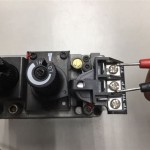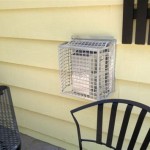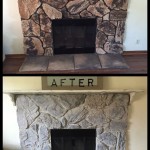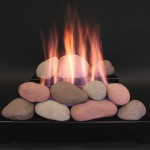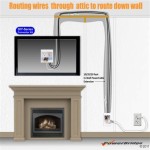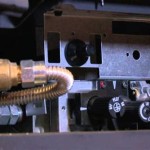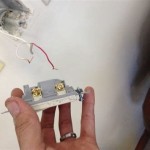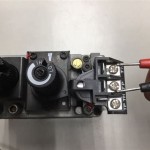Fireplace Brick Liner Replacement: A Guide for Homeowners
Fireplace brick liners play a vital role in ensuring the safety and efficiency of your fireplace. These fire-resistant bricks line the interior of the fireplace and chimney, protecting the surrounding structures from the intense heat generated by the fire. However, over time, brick liners can deteriorate due to exposure to high temperatures, moisture, and soot accumulation. When this happens, it's crucial to replace them to prevent potential hazards like chimney fires and carbon monoxide leaks.
This article will provide homeowners with a comprehensive guide to fireplace brick liner replacement. We'll delve into the signs that indicate a replacement is necessary, explore the benefits of replacing the liner, and outline the steps involved in the process. By understanding these concepts, homeowners can make informed decisions about their fireplace maintenance and ensure a safe and enjoyable experience.
Signs That Indicate a Fireplace Brick Liner Replacement
Several visual and functional indicators can signal that your fireplace brick liner needs replacement. Here are some red flags to watch out for:
- Visible Cracks or Gaps: Cracks or gaps in the brick liner indicate structural damage, compromising the firebox's integrity. These cracks can allow heat to escape, reduce efficiency, and potentially expose surrounding materials to high temperatures.
- Loose or Missing Bricks: Loose or missing bricks within the firebox are a clear sign of deterioration. These bricks can easily fall into the fire, posing a safety hazard and compromising the liner's effectiveness.
- Soot Buildup: Excessive soot buildup on the brick liner indicates improper combustion and potentially inefficient burning. This buildup can also contribute to the liner's deterioration and increase the risk of a chimney fire.
- Visible Smoke Leakage: If you notice smoke escaping from the firebox or around the fireplace opening, it could be a sign of cracks or gaps in the brick liner. This leakage can compromise the safety and efficiency of the fireplace.
- Unusual Sounds: If you hear unusual noises like popping or cracking sounds coming from the fireplace during operation, it could indicate structural problems with the brick liner. These sounds might suggest that the liner is expanding and contracting due to heat and could be a sign of potential failure.
Benefits of Replacing a Fireplace Brick Liner
Replacing a damaged or deteriorated fireplace brick liner offers numerous benefits, including:
- Enhanced Safety: A new brick liner ensures the firebox is properly sealed, preventing heat and smoke leakage. This reduces the risk of chimney fires, carbon monoxide leaks, and potential damage to surrounding structures.
- Improved Efficiency: A well-maintained brick liner promotes efficient combustion, allowing for optimal heat transfer and minimizing energy losses. This translates to improved fireplace performance and potentially lower energy bills.
- Increased Durability: Replacing the old, damaged liner with a new one significantly extends the lifespan of your fireplace. The new bricks are resistant to cracking and deterioration, providing long-lasting protection.
- Improved Aesthetics: A new brick liner can enhance the aesthetic appeal of your fireplace, giving it a fresh and modern look. You can choose from different colors, textures, and styles to match your décor.
Steps Involved in Fireplace Brick Liner Replacement
Replacing a fireplace brick liner is a complex process that requires specialized knowledge and skills. Here's a general overview of the stages involved:
- Inspection and Assessment: A qualified chimney sweep or fireplace professional will inspect the existing liner and assess the extent of the damage. They will determine the best course of action for replacement and advise on the necessary materials.
- Dismantling: The existing brick liner will be carefully removed from the firebox, ensuring proper ventilation and minimizing dust and debris. This process may involve specialized tools and equipment.
- Installation: The new brick liner will be installed according to industry standards and building codes. The process includes setting the bricks in mortar, ensuring proper alignment, and allowing sufficient curing time.
- Finishing Touches: After the new liner is installed, any necessary repairs or finishing touches will be completed, such as repointing mortar joints and replacing damaged fireplace components.
It's essential to hire a qualified and reputable fireplace professional for the replacement process. They possess the expertise and tools needed to ensure a safe, efficient, and durable installation. Working with a professional also ensures that the replacement meets all applicable building codes and regulations.

Bl42 Refractory Brick Liner Kit Direct Vent Gas Fireplaces

Universal Large Fireplace Replacement Stack Brick Refractory Panel

Fireplace Refractory Panels Woodstoves Fireplaces

Valor Red Brick Liner G4 Series 789vrlv2 Friendly Fires

Fireplace Chamber Lining Panels Brick Bond Solutions

Firebox Replacement Ways To Replace A

Fireplace Chamber Lining Panels Brick Bond Solutions

Fireplace Inserts Everything You Need To Know Full Service Chimney

Refractory Brick Interior Panels For Meridian 36 And 42 Majestic Direct Vent Fireplaces

Pleasant Hearth Firebrick Panel Set For 36 In Zero Clearance Ventless Dual Fuel Fireplace Insert Zrp360 The Home Depot
Related Posts

